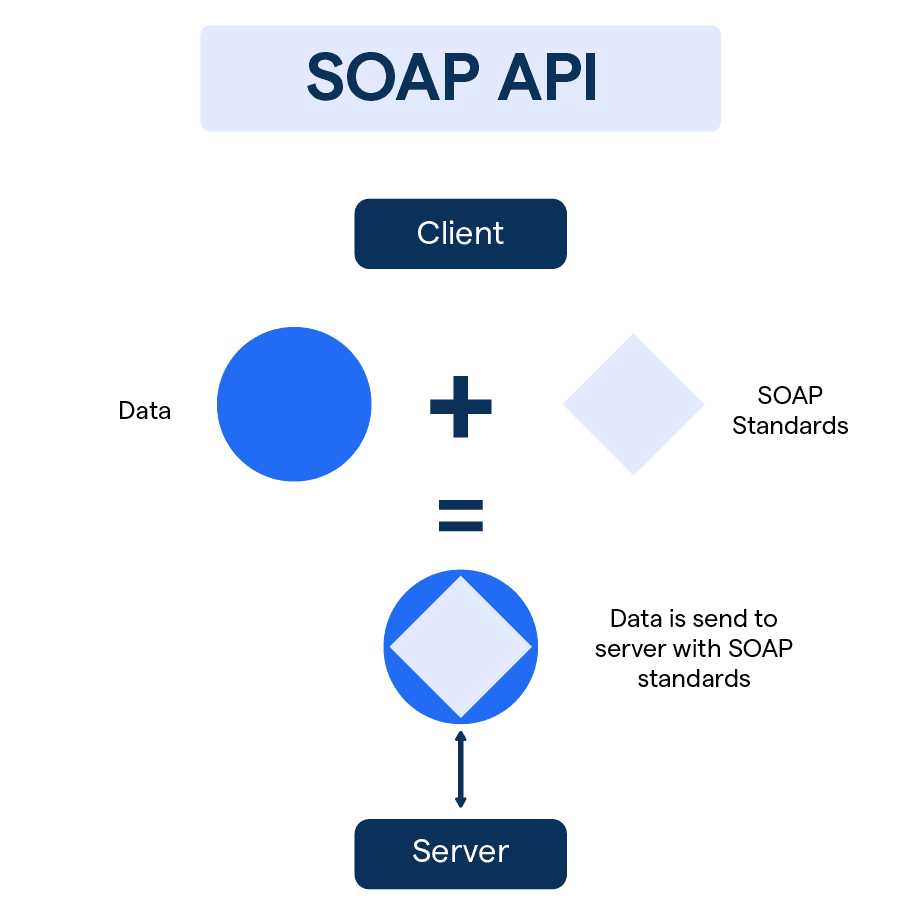What is SOAP API?
SOAP API, standing for Simple Object Access Protocol Application Programming Interface, is a communication protocol, a way for programs to communicate with each other over the internet irrespective of the operating system or programming language used.
It's all about enabling applications to share data and perform operations - such as creating, retrieving, updating, or deleting data.
Why Use SOAP APIs?
Why choose SOAP APIs when there are other options? SOAP APIs shine in specific scenarios.
These APIs are ideal for executing operations that require a high level of security, reliability and when ACID compliance is mandatory (Atomicity, Consistency, Isolation, Durability).
SOAP APIs also excel in establishing communications between applications over a network because it operates well over different protocols like HTTP, SMTP, TCP, and more.
Who Uses SOAP APIs?
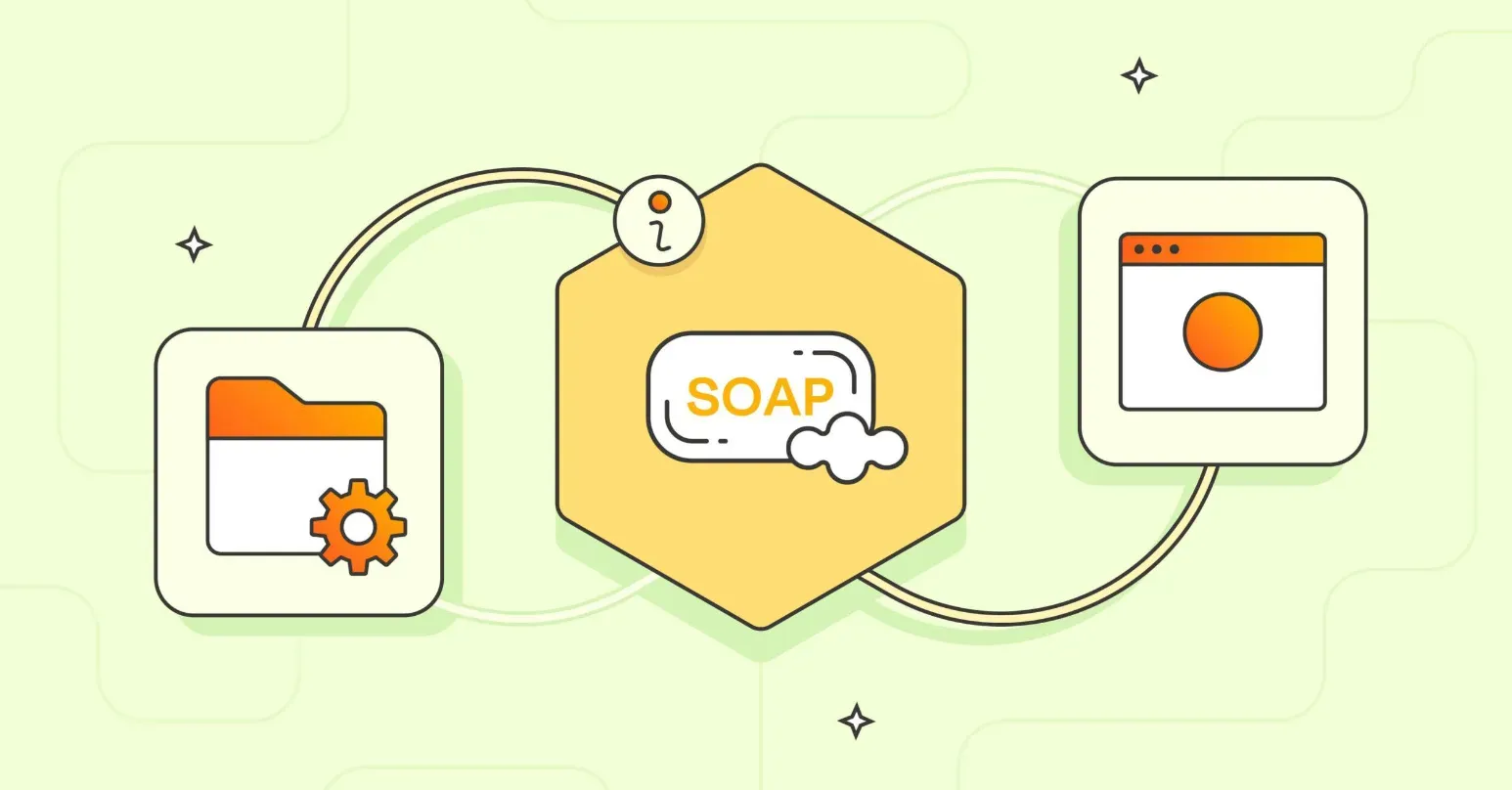
SOAP APIs are used by developers and organizations who aim to create web, mobile, and cloud APIs with absolute emphasis on security and robustness.
Due to their ability to ensure high security, reliability and ACID compliance, they’re often adopted in environments where sensitive data is being exchanged, such as payment gateways, identity verification services, and CRM software like Salesforce.
Where is SOAP API Used?
SOAP APIs are predominantly used in web services in enterprise-level applications.
They provide the communication bridge needed in distributed systems and are commonly used in business software and services provided by leading companies that handle sensitive data.
Healthcare, banking, and telecommunications are prime sectors where SOAP APIs are extensively used.
When to Use SOAP APIs?
One should consider using SOAP APIs when building web services that require high security, fail-safe operations and standards compliance is a must.
It is also best utilized when the service needs to be stateful, or when the API needs to support asynchronous processing and invocation.
How does SOAP API work?
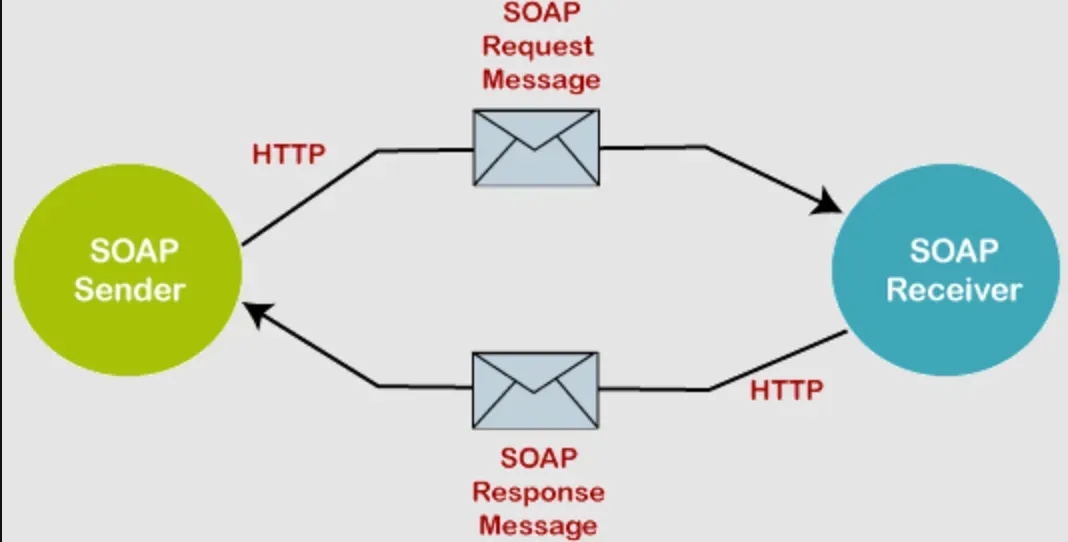
In this section, we'll explore the intricacies of SOAP (Simple Object Access Protocol) APIs, and find out how they operate to enable seamless communication and interaction between various software components over a network.
Understanding SOAP APIs
SOAP APIs, or web services, function as a messaging protocol that allows programs running on different operating systems to communicate with each other.
This communication can happen over a variety of networks using HTTP and XML, overcoming platform and language dependencies.
SOAP Request-Response Cycle
A typical interaction with SOAP starts with a SOAP request from a client, typically an application, to a server.
This request is an XML document containing the necessary information to invoke a particular method on the server. The server responds with a SOAP message, also an XML document, containing the result or outcome.
Structure of SOAP Messages
SOAP messages mainly consist of three parts: an envelope, a header, and a body. The envelope is the top-level element defining the XML document as a SOAP message.
The optional header contains attributes of the message used in processing the request. The body contains the request and response information.
SOAP APIs Over HTTP
SOAP APIs primarily work over HTTP, making it compatible with most web infrastructure. The HTTP protocol functions as the reliable request-response protocol to transmit SOAP messages between the client and server.
SOAP APIs and Web Services Description Language (WSDL)
When developing SOAP APIs, WSDL comes into play. WSDL is an XML-based specification that provides a detailed method for describing the functionality of a SOAP web service.
It provides the structure for requests and responses and makes it easy for applications to understand and interact with these services.
Role of SOAP APIs in Today’s Web Landscape
Despite the emergence of REST APIs, SOAP APIs continue to serve relevance in the modern web landscape. They are used heavily in enterprises, specifically for transactions that require high security, reliability, and ACID compliance.
They work well in distributed enterprise environments and are commonly used in financial services, telecommunication services, and CRM software.
What is the SOAP structure?
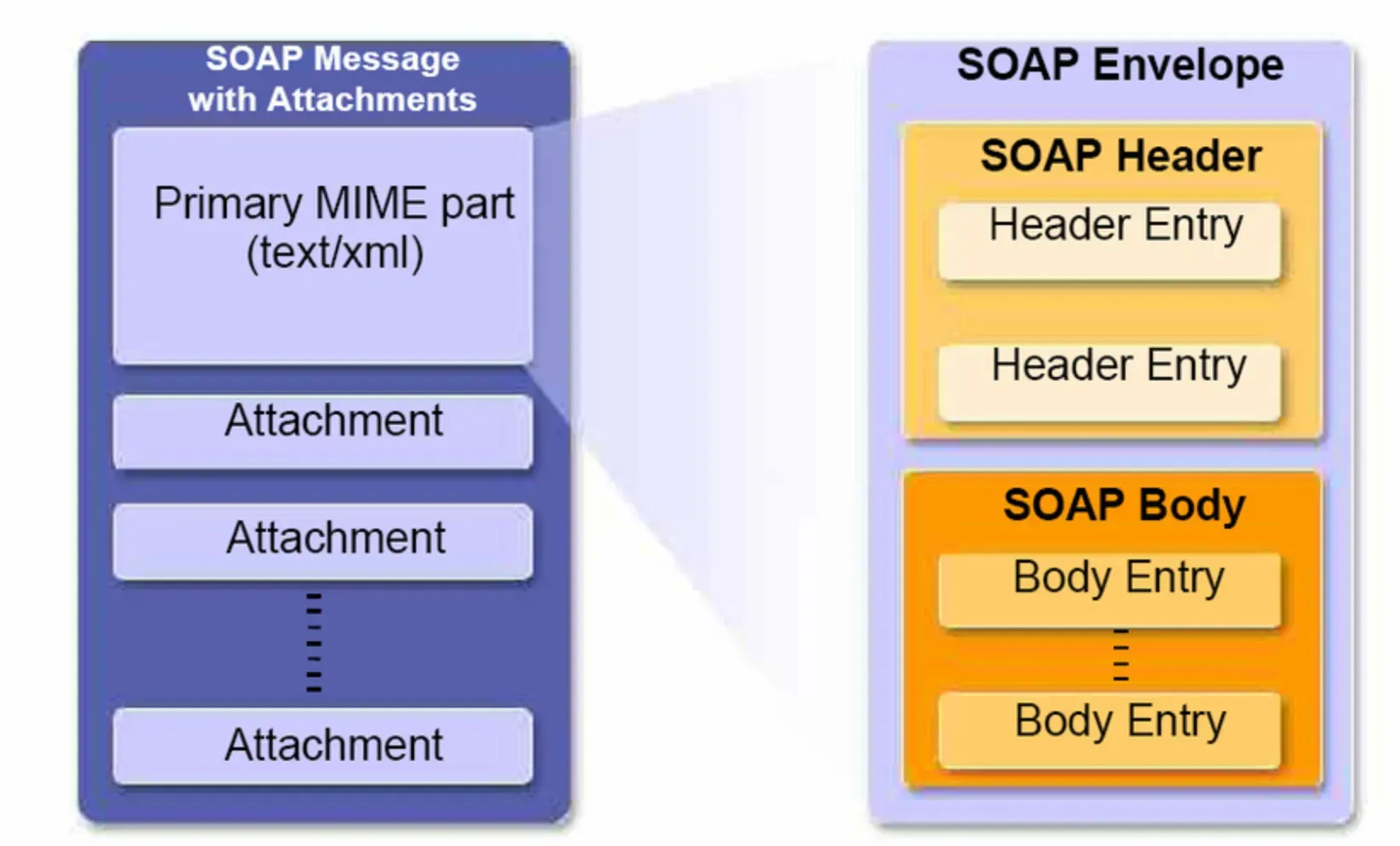
The Envelope
The envelope is the root element of a SOAP message. It includes the necessary XML namespaces and provides a container for the header and body elements.
The Header
The header element is optional and can contain additional information about the SOAP message, such as authentication tokens, encryption details, or other custom headers relevant to the specific application or service.
The Body
The body element contains the actual payload of the SOAP message. It carries the data being sent to the target system and includes the necessary elements and attributes defined in the API specification for proper execution of the requested operation.
The Fault
The fault element is used to convey error information in case of SOAP API failures. It contains details about the specific error, including error codes, error messages, and any additional information that can help in troubleshooting and resolving the issue.
What is SOAP API used for?
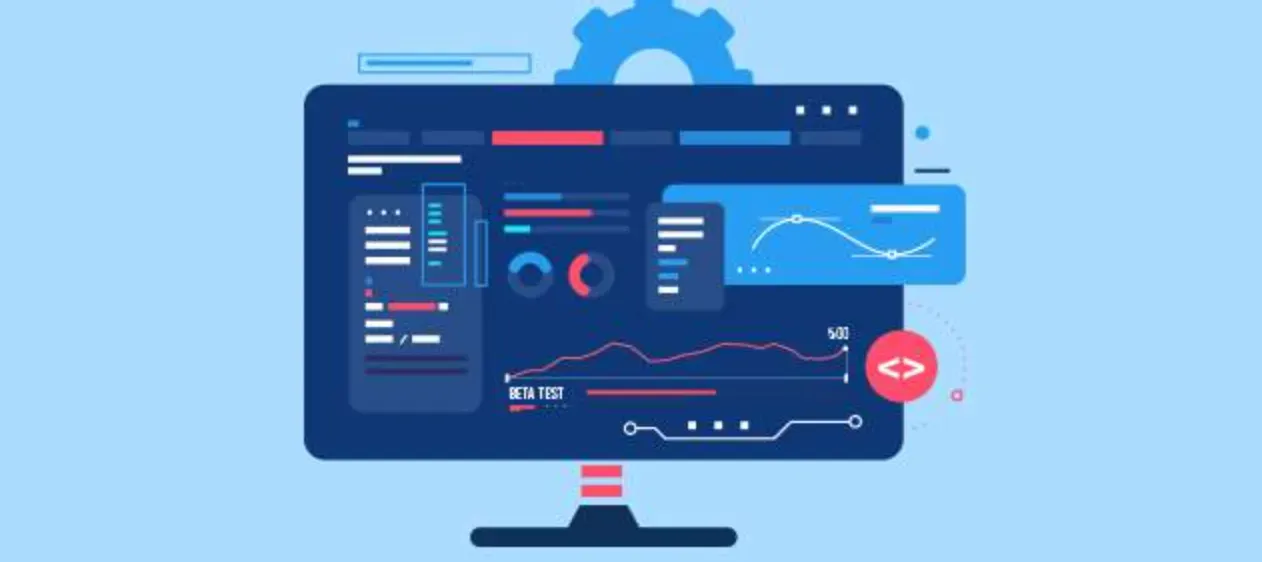
Record Manipulation
SOAP API is commonly used for record manipulation in various enterprise applications.
It allows users to create, read, update, and delete records in remote systems by sending SOAP requests and receiving corresponding responses.
API Calls for Account Management
SOAP API provides a set of API calls specifically designed for account management tasks.
These calls enable users to create and manage user accounts, set permissions and access levels, and perform other administrative operations.
Language and Platform Support
SOAP API is supported by a wide range of programming languages and platforms, including Java, .NET, PHP, and Python.
This broad support makes it a popular choice for integrating systems built on different technologies and allows for seamless communication between disparate applications.
How is SOAP API different from REST API?
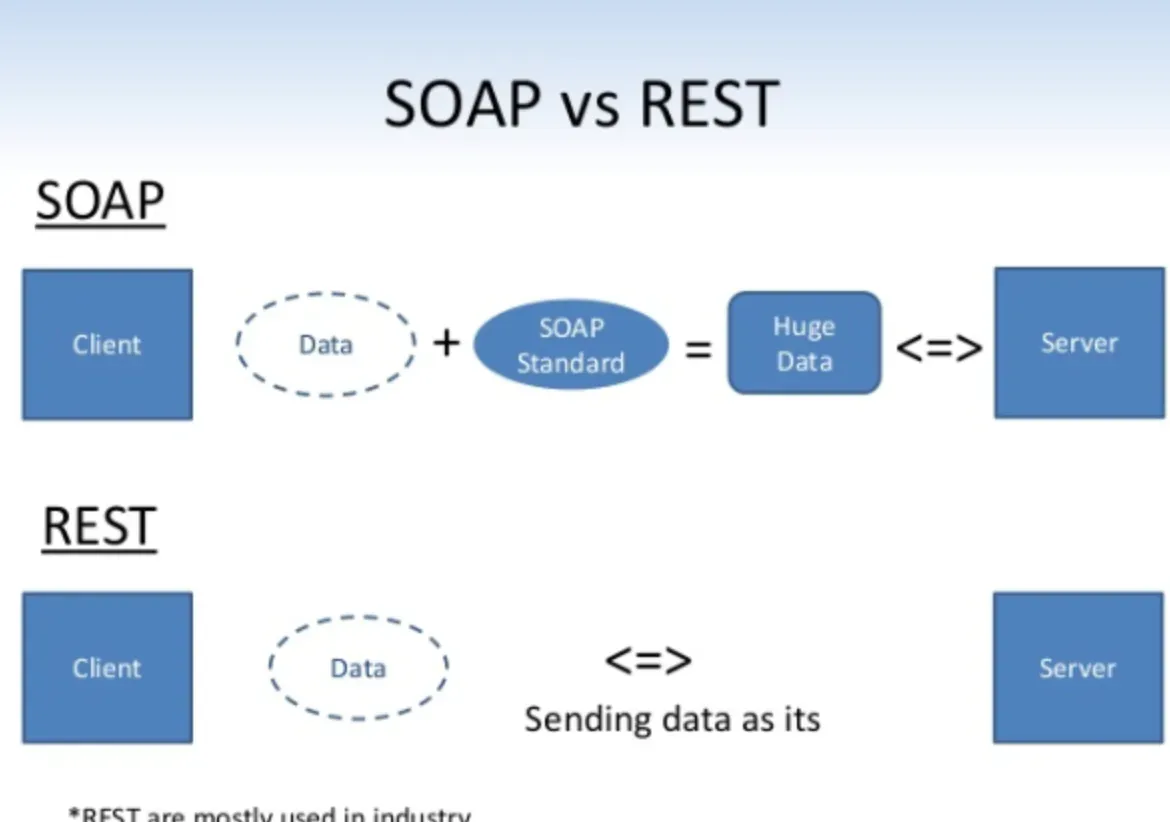
In this section, we'll dissect the key differences between SOAP (Simple Object Access Protocol) APIs and REST (Representational State Transfer) APIs, highlighting how their unique characteristics cater to differing use cases in the world of web services.
Core Philosophy
SOAP is a protocol, and its design focuses on ensuring that it can deliver messages reliably to the recipient, even over unreliable networks.
SOAP offers robust features such as WS-Security for secure transmission of data.
REST, on the other hand, is an architectural style inspired by the workings of the web. It uses standard HTTP methods, simplifying the interaction by leveraging the built-in capabilities of the protocol.
REST tends towards simplicity and scalability over reliability features.
Message Format
SOAP APIs primarily use XML for message format. The SOAP messages are highly extensible, and the protocol includes built-in retry logic to compensate for failed communications.
REST doesn’t enforce a specific message format, and data can be transmitted in various formats such as JSON, XML, or even HTML.
REST APIs typically use JSON because it's more lightweight and easier for humans to read compared to XML.
Performances and Overhead
SOAP incurs a larger overhead due to its detailed request and response headers.
It also requires more CPU performance and network bandwidth, particularly when handling large messages.
In contrast, REST is more performance-friendly. Its message formats are more flexible and typically shorter, resulting in reduced bandwidth usage and faster data transmission.
Communication Model
SOAP APIs support both one-way and two-way communication, which means they can be used for asynchronous processing and invoking services that don't require an immediate response.
REST APIs work best with synchronous processing, as they primarily use HTTP's request-response model.
Error Handling
SOAP has built-in error handling and provides detailed information about the error, which can be useful for troubleshooting.
REST uses standard HTTP status codes to indicate the success or failure of a request, providing a simplified error response.
Use Cases
SOAP is used when the application requires a high degree of reliability and security, such as in financial services or telecommunication services.
REST is more commonly used for web applications due to its simplicity, scalability, and performance, making it suitable for services like social media interfaces, mobile services, and web chat services.
How to implement SOAP API?
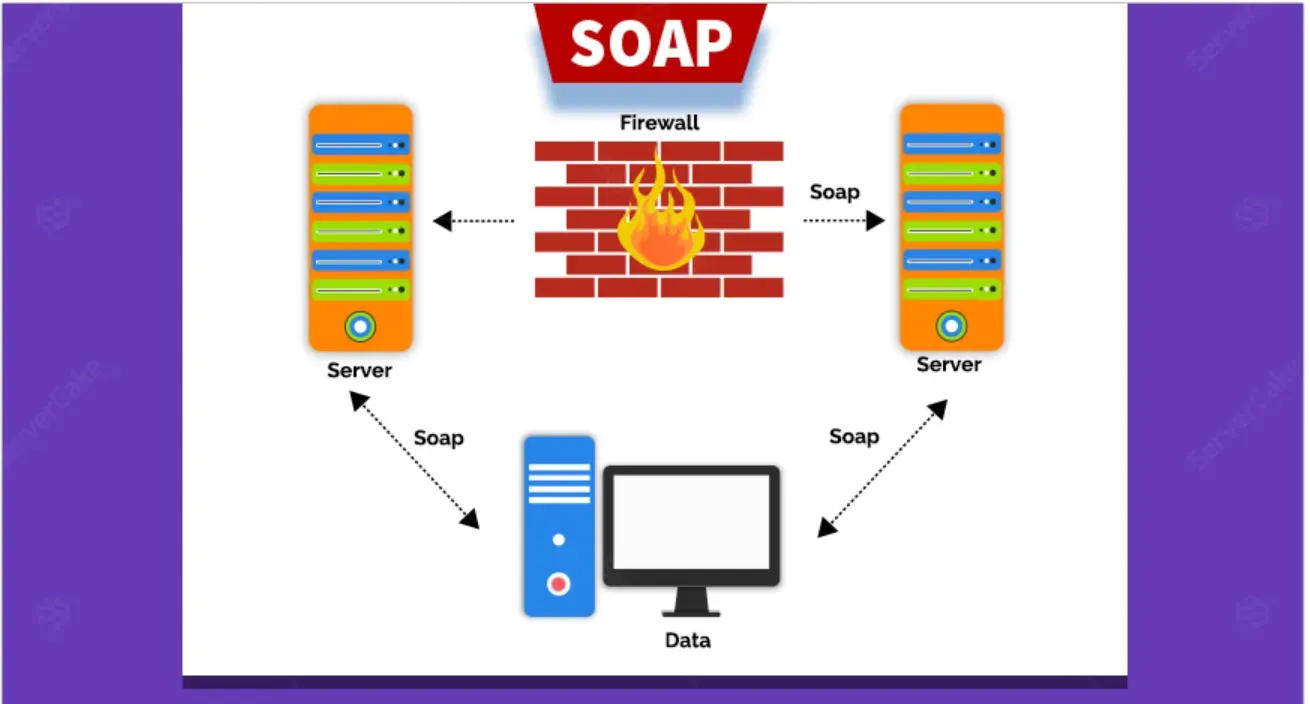
We'll be covering the key steps to implementing SOAP APIs and how they intertwine to a integrated and functional web service.
Understand your Requirement
Before moving to code, the first step is to understand what functionality the SOAP API will provide.
Do you need it for data retrieval, updating records, or both? Are there security considerations? Understanding your needs will help you define the API's operations.
Establish the SOAP Structure
Set the structure of the SOAP message. It typically consists of an envelope that encapsulates the entire message, a header storing any optional information, and a body that contains the actual request or response.
This structure must be determined and maintained across all your SOAP messages.
Define the WSDL
The Web Services Description Language (WSDL) file is an integral part of SOAP APIs, acting as the interface to your service.
It defines the methods that your service offers and their respective parameters. Good practice is to have the WSDL file written up-front to help dictate the course of your development.
Coding the SOAP API
Build your SOAP API based on the requirements and the defined WSDL file. Use your preferred language but bear in mind that SOAP libraries exist to simplify this process.
Languages like Java, .NET, and PHP all come with built-in support for SOAP.
Implement Security Measures
SOAP offers numerous mechanisms to ensure secure transactions. You can implement security measures based on WS-Security standards, which defines enhancements to SOAP messaging to ensure integrity, confidentiality, and authentication.
Test the API
Lastly, thoroughly test the SOAP API for functional correctness, exception handling, and fault tolerance.
Ensure it responds correctly to requests and maintains seamless operation. Testing tools like SoapUI can facilitate this process.
Use Cases and Examples of SOAP API
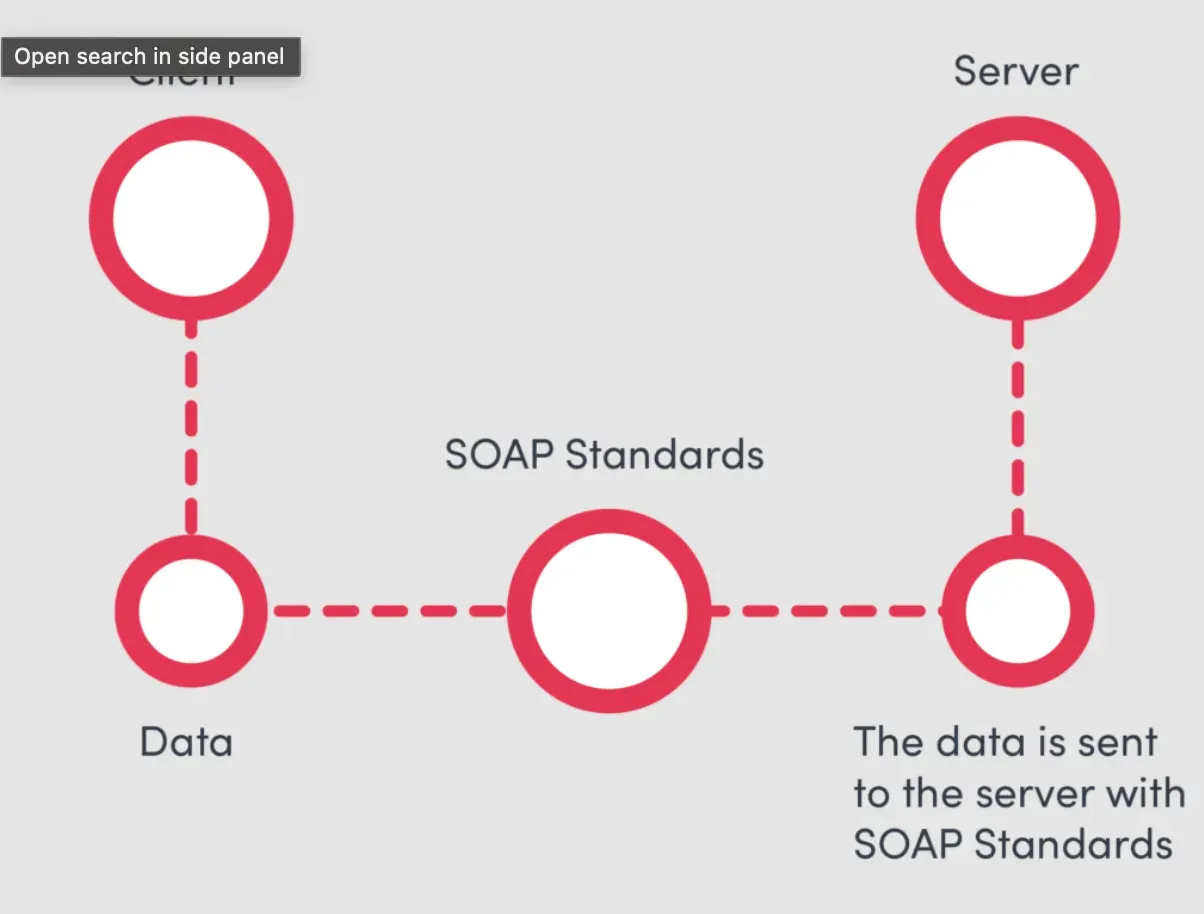
Enterprise Applications
SOAP API is extensively used in enterprise applications, such as customer relationship management (CRM) systems, human resources management systems (HRMS), and enterprise resource planning (ERP) solutions.
It allows these systems to exchange data and seamlessly integrate with other applications.
Integration with Legacy Systems
SOAP API enables integration with legacy systems that still rely on SOAP-based communication protocols.
By providing SOAP APIs, these systems can interact with modern applications and take advantage of new functionalities without requiring a complete overhaul.
Data Exchange in Secure Environments
SOAP API is often used in scenarios where data security is of paramount importance.
Its built-in support for WS-Security protocols allows for secure transmission of sensitive information, making it suitable for industries like healthcare, finance, and government sectors.
SOAP API Best Practices and Recommendations
In this section, we'll examine the top-notch strategies and recommendations that will help you take full advantage of SOAP (Simple Object Access Protocol) APIs, ensuring robust and secure inter-application communication.
Design for Your Use Case
SOAP APIs are particularly suited for complex transactions and operations that require a high level of security and reliability. Design your SOAP API with a clear understanding of its core use.
Does it need to handle asynchronous operations, offer ACID-compliant transactions, or provide a high level of WS-Security? Structure your API to best meet these needs.
Use Accurate WSDL
For a SOAP API to deliver optimal performance, its Web Services Description Language (WSDL) - the XML-based interface to your service - should be precise and accurate.
Ensure the WSDL accurately represents the service methods and data structures to avoid any confusion or errors at runtime.
Optimize Your SOAP Messages
SOAP messages, encoded in XML, can be quite verbose and incur a heavy penalty in terms of bandwidth and processing. Endeavor to keep your SOAP messages as concise as possible.
Avoid unnecessary namespaces, use shorthand where possible, and limit the use of redundant data.
Incorporate Effective Error Handling
SOAP APIs come with a built-in error handling mechanism, which allows for the transmission of detailed fault information within a SOAP message. Utilize this feature effectively.
Provide comprehensive fault details to help troubleshoot issues and rectify errors quickly.
Ensure Backward Compatibility
As your API evolves, strive for backward compatibility. Any change to the API should not break the existing functionality that consumers rely on.
Make sure to version your APIs appropriately to allow for seamless transitions and ensure older versions are still supported for a reasonable period.
Regularly Monitor and Test Your SOAP API
Lastly, regular monitoring and testing are key to maintaining the performance and robustness of your SOAP API.
Employ various testing methods including unit testing, functionality testing, load testing, and more. Invest in good API monitoring tools to track performance, identify bottlenecks, and rectify issues before they spiral out of control.
Frequently Asked Questions (FAQs)
Can SOAP API be used with any programming language?
Yes, SOAP API can be used with a wide range of programming languages, such as Java, .NET, PHP, and Python. It is based on XML and can be implemented using SOAP client libraries or frameworks available in different languages.
Is SOAP API suitable for mobile application development?
SOAP API is not the most common choice for mobile application development due to its more complex and heavyweight nature compared to REST API. However, it can still be used if required features, such as security or advanced functionality, are necessary for the application.
Can SOAP API work over different network protocols?
Yes, SOAP API can work with different network protocols like HTTP, HTTPS, SMTP, and more. By default, SOAP API uses HTTP or HTTPS for transmitting SOAP messages, but it can be adapted to work with other protocols if needed.
Can SOAP API handle large amounts of data?
SOAP API can handle large amounts of data, but developers need to be mindful of the performance impact. It is recommended to optimize data transfers, enable compression, and utilize appropriate techniques like pagination or streaming for efficiently working with large datasets.
Is SOAP API still widely used?
Yes, SOAP API is still widely used, especially in enterprise-level applications and integrations. While REST API has gained popularity, SOAP API remains relevant due to its robustness, support for advanced features, and its ability to communicate between systems built on various technologies.
